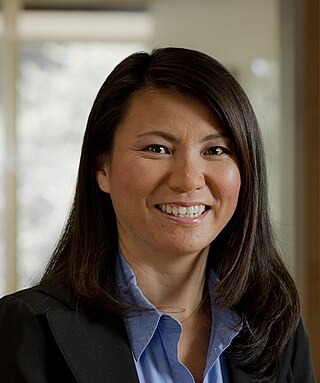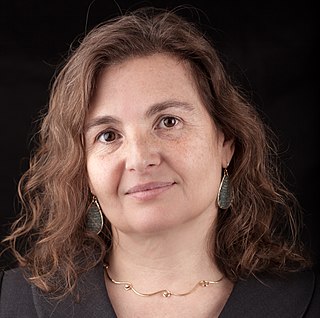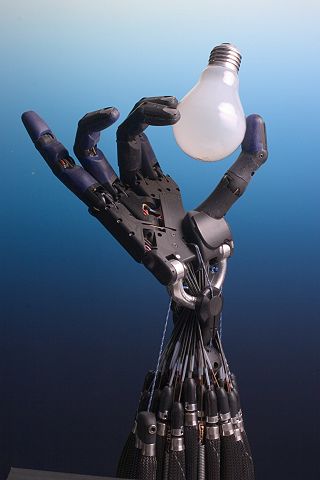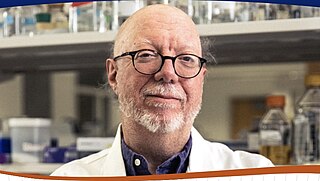External links
| International | |
|---|---|
| National | |
| Academics | |
| Other | |
Matthew T. Mason | |
|---|---|
| Born | August 24, 1952 |
| Nationality | American |
| Alma mater | Massachusetts Institute of Technology |
| Scientific career | |
| Fields | Robotics |
| Institutions | Carnegie Mellon University |
| Thesis | Manipulator Grasping and Pushing Operations (1982) |
| Doctoral advisor | Tomás Lozano-Pérez Berthold K.P. Horn |
Matthew Thomas Mason (born August 24, 1952 in Oklahoma City, Oklahoma) is an American roboticist and the former Director of the Robotics Institute at Carnegie Mellon University. Mason is a researcher in the area of robotic manipulation, and is the author of two highly cited textbooks in the field. [1] [2]
In 2004, Mason received widespread media attention for developing the first origami folding robot, demonstrating advances in difficult manipulation tasks. [3] [4]
Mason received his B.S., M.S., and Ph.D. degrees from the Massachusetts Institute of Technology in 1976, 1978, and 1982, respectively. His M.S. Thesis Compliance and Force Control for Computer Control led Manipulators was advised by Berthold K.P. Horn, and his Ph.D. thesis Manipulator Grasping and Pushing Operations was advised by Tomas Lozano-Perez and Berthold K.P. Horn.
He worked at the IBM Thomas J. Watson Research Center as a research visitor in 1978, and has been teaching at the School of Computer Science and the Robotics Institute at Carnegie Mellon University since 1982. At CMU, Mason served as the chair of the robotics doctoral program from 1995–2004, and is currently the director of the Robotics Institute.
Mason served as the North American Editor of the Butterworths Series in Computer Automation from 1988 to 1994, the technical editor of the IEEE Journal on Robotics and Automation from 1989 to 1992, and on the board of editors for the MIT Robotics Review from 1988 to 1992. He is currently a member of the editorial and advisory board for the International Journal of Robotics Research.
Mason was National Science Foundation Fellow from 1976 to 1980. In 1983 he received the System Development Foundation Prize. In 1992 he became Fellow of the American Association for Artificial Intelligence, and in 2000 he became Fellow of the Institute of Electrical and Electronics Engineers. Mason is currently the Chief Scientist at Berkshire Grey. [5]
Mason's work is organized around five topics:
Mason has published several books and articles, a selection:

Kenneth Yigael Goldberg is an American artist, writer, inventor, and researcher in the field of robotics and automation. He is professor and chair of the industrial engineering and operations research department at the University of California, Berkeley, and holds the William S. Floyd Jr. Distinguished Chair in Engineering at Berkeley, with joint appointments in Electrical Engineering and Computer Sciences (EECS), Art Practice, and the School of Information. Goldberg also holds an appointment in the Department of Radiation Oncology at the University of California, San Francisco.
Robot learning is a research field at the intersection of machine learning and robotics. It studies techniques allowing a robot to acquire novel skills or adapt to its environment through learning algorithms. The embodiment of the robot, situated in a physical embedding, provides at the same time specific difficulties and opportunities for guiding the learning process.

Randal E. Bryant is an American computer scientist and academic noted for his research on formally verifying digital hardware and software. Bryant has been a faculty member at Carnegie Mellon University since 1984. He served as the Dean of the School of Computer Science (SCS) at Carnegie Mellon from 2004 to 2014. Dr. Bryant retired and became a Founders University Professor Emeritus on June 30, 2020.

Legged robots are a type of mobile robot which use articulated limbs, such as leg mechanisms, to provide locomotion. They are more versatile than wheeled robots and can traverse many different terrains, though these advantages require increased complexity and power consumption. Legged robots often imitate legged animals, such as humans or insects, in an example of biomimicry.
Howie Choset is a professor at Carnegie Mellon University's Robotics Institute. His research includes snakebots, or robots designed in a segmented fashion to mimic snake-like actuation and motion, demining, and coverage. His snake robots have also been used in surgical applications for diagnosis and tumor removal; nuclear power plant inspection, archaeological excavations, manufacturing applications and understanding biological behaviors of a variety of animals.

Yoky Matsuoka is the CEO and Founder of Yohana. She was the CTO of Google Nest, a co-founder of Google X and previously held roles as VP of Technology and Analytics at Twitter, technology executive at Apple, and as VP of Technology at Nest.

Open Robotics Automation Virtual Environment (OpenRAVE) provides an environment for testing, developing, and deploying motion planning algorithms in real-world robotics applications. The main focus is on simulation and analysis of kinematic and geometric information related to motion planning. OpenRAVE's stand-alone nature allows it to be easily integrated into existing robotics systems. It provides many command-line tools to work with robots and planners, and the run-time core is small enough to be used inside controllers and bigger frameworks.

Daniela L. Rus is a roboticist and computer scientist, Director of the MIT Computer Science and Artificial Intelligence Laboratory (CSAIL), and the Andrew and Erna Viterbi Professor in the Department of Electrical Engineering and Computer Science (EECS) at the Massachusetts Institute of Technology. She is the author of the books Computing the Future and The Heart and the Chip.
Leslie Pack Kaelbling is an American roboticist and the Panasonic Professor of Computer Science and Engineering at the Massachusetts Institute of Technology. She is widely recognized for adapting partially observable Markov decision processes from operations research for application in artificial intelligence and robotics. Kaelbling received the IJCAI Computers and Thought Award in 1997 for applying reinforcement learning to embedded control systems and developing programming tools for robot navigation. In 2000, she was elected as a Fellow of the Association for the Advancement of Artificial Intelligence.

Robotics is the interdisciplinary study and practice of the design, construction, operation, and use of robots.
Bin He is a Chinese American biomedical engineering scientist. He is the Trustee Professor of the Department of Biomedical Engineering, professor by courtesy in the Department of Electrical and Computer Engineering, and Professor of Neuroscience Institute, and was the head of the department of Biomedical Engineering at Carnegie Mellon University. Prior, he was Distinguished McKnight University Professor of Biomedical Engineering and Medtronic-Bakken Endowed Chair for Engineering in Medicine at the University of Minnesota. He previously served as the director of the Institute for Engineering in Medicine and the Center for Neuroengineering at the University of Minnesota. He was the Editor in Chief of the IEEE Transactions on Biomedical Engineering and serves as the editor in chief of IEEE Reviews in Biomedical Engineering. He was the president of the IEEE Engineering in Medicine & Biology Society (EMBS) from 2009 to 2010 and chair of International Academy of Medical and Biological Engineering from 2018 to 2021.
The IEEE Robotics and Automation Award is a Technical Field Award of the Institute of Electrical and Electronics Engineers (IEEE) that was established by the IEEE Board of Directors in 2002. This award is presented for contributions in the field of robotics and automation.

Bruce Randall Donald is an American computer scientist and computational biologist. He is the James B. Duke Professor of Computer Science and Biochemistry at Duke University. He has made numerous contributions to several fields in Computer Science such as robotics, Microelectromechanical Systems (MEMS), Geometric & physical algorithms and computational geometry, as well as in areas of Structural Molecular Biology & Biochemistry such as Protein design, Protein Structure Determination and Computational Chemistry.
John Matthew Hollerbach is a professor of computer science and research professor of mechanical engineering at the University of Utah. He is the editor of The International Journal of Robotics Research, a Senior Editor of Presence: Teleoperators & Virtual Environments, and a Governing Board member of the electronic journal Haptics-e.
A juggling robot is a robot designed to be able to successfully carry out bounce or toss juggling. Robots capable of juggling are designed and built both to increase and test understanding and theories of human movement, juggling, and robotics. Juggling robots may include sensors to guide arm/hand movement or may rely on physical methods such as tracks or funnels to guide prop movement. Since true juggling requires more props than hands, many robots described as capable of juggling are not.

Domenico Prattichizzo is an Italian scientist with a strong and international recognized expertise in the fields of Haptics, Robotics and, Wearable technology. His researches find their main applications in virtual and augmented reality scenarios and in the rehabilitation of people with upper and lower limbs, visual and cognitive impairments.
Berthold Klaus Paul Horn is an American scientist working in the field of artificial intelligence and computer vision. He is Professor of Electrical Engineering and Computer Science at Massachusetts Institute of Technology (MIT). He is also Principal Investigator at the Computer Science and Artificial Intelligence Laboratory (CSAIL) at MIT.
Berkshire Grey, Inc. is an American technology company based in Bedford Massachusetts that develops integrated artificial intelligence (“AI") and robotic solutions for e-commerce, retail replenishment, and logistics. The company's systems automate pick, pack and sort operations.
Matthew Johnson-Roberson is an American roboticist, researcher, entrepreneur and educator. Since January 2022 he has served as director of the Robotics Institute at Carnegie Mellon University. Previously he was a professor at the University of Michigan College of Engineering since 2013, where he co-directed the UM Ford Center for Autonomous Vehicles (FCAV) with Ram Vasudevan. His research focuses on computer vision and artificial intelligence, with the specific applications of autonomous underwater vehicles and self-driving cars. He is also the co-founder and CTO of Refraction AI, a company focused on providing autonomous last mile delivery.

John Kenneth Salisbury, Jr. is an American Roboticist and Research Professor Emeritus at Stanford University’s Computer Science Department and Stanford School of Medicine’s Department of Surgery. Salisbury is a researcher in the fields of robotics, haptics, and medical robotics. He is an inventor of over 50 patents and recipient of the 2011 IEEE Inaba Award for "Commercialization of Products in Medical Robotics, Robotics, and Haptics".